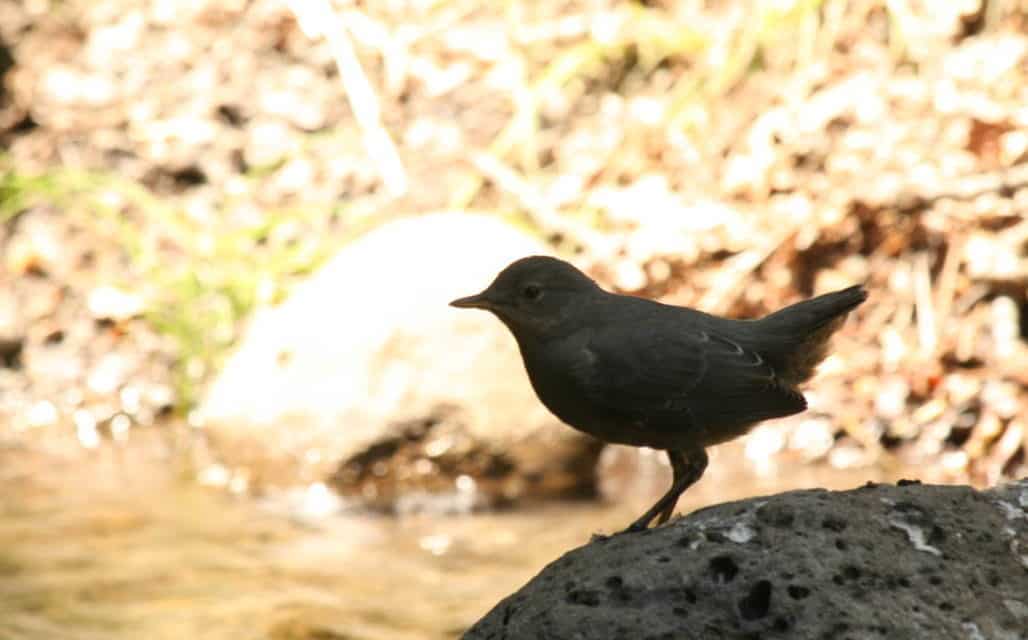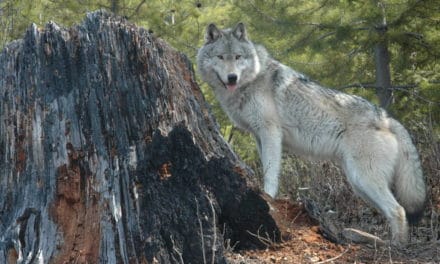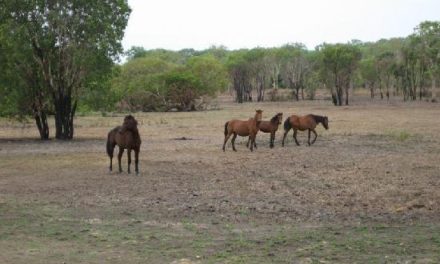Article and Photos by Suzanne McDonald
Along many of our swiftly-flowing mountain streams, right under our noses, the small dark grey American Dipper bird goes 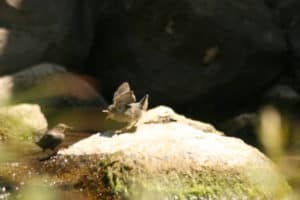 bobbing along. It flies low over the water, following the curves in the stream, and jumps from rock to rock, bobbing up and down. It is this behavior of bending down and up, up and down as though doing a push-up which has given it its name. Curiously, this bird is born near the stream, often in a nest that is sprayed by water, and lives out its entire life along the mountain streams of western North America. It does not stray from the rushing water. If it needs to travel because the water has iced up, it will follow the stream to another stream.
bobbing along. It flies low over the water, following the curves in the stream, and jumps from rock to rock, bobbing up and down. It is this behavior of bending down and up, up and down as though doing a push-up which has given it its name. Curiously, this bird is born near the stream, often in a nest that is sprayed by water, and lives out its entire life along the mountain streams of western North America. It does not stray from the rushing water. If it needs to travel because the water has iced up, it will follow the stream to another stream.
It actually walks and “flies” underwater where it catches all of its food, returning to the surface to eat its delicious morsel while the chilly water swirls all around it. It is our only truly aquatic North American songbird. While the rest of the songbirds find insects in the air, on plants and in the ground, the Dipper Bird has found its niche by feeding on those insects which live in the rushing water of a stream. Insects such as caddisfly and stone fly larvae, known to fly fishermen, are the common prey of these stocky, short-tailed, 7.5-inch birds.
To protect its eyes while underwater, a white eyelid, or nictitating membrane, covers the eyeball. This white covering can be seen when the bird blinks. Other adaptations to its wet lifestyle include a moveable flap to close its nostrils, plenty of warm down feathers, and an oil gland for preening that is 10 times larger than other songbirds. Dippers, and all birds, use their preen gland at the base of their tail to rub oil over their feathers for protection from moisture.
Only pure, fresh water suits this cheery, energetic little creature. Using its long legs to turn over stones underwater and its claws to grasp the bottom of the stream, it can even go upstream against swift, turbulent currents. Born in a nest with the opening facing the water, and growing up in the raging waters of spring run-off, water is second nature to this songbird. Once called the water ouzel, the Dipper bird is the only member of its family to live in North America.
Next time you are beside a fast-flowing mountain stream, listen up for a melodic, warbling call a few yards down the stream, perhaps around the next bend, and search the rocks for the plump, slate-grey, bobbing bird. It may look like a part of the rock, a small protuberance, but this “bump” will be moving. In fact, as you watch, it will boldly walk off the rock into the water, dunking its head, and then disappearing altogether. It pops back up, not even bothering to shake off the water, and enters the stream again from another point, seamlessly moving between rock, air and water as though all were one. 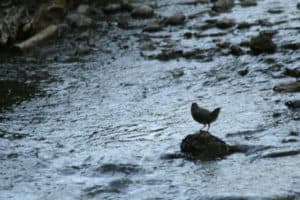
Written by Suzanne McDonald, long-time bird watcher and volunteer Field Trip coordinator for Plumas Audubon’s upcoming Grebe Festival to be held August 19-21, 2016 in Chester. There will be tours, boat trips, a seminar, movie, art exhibits, beer stroll, and family activities. The headquarters will be at the Almanor Recreation Center, 102 Meadowbrook Loop, Chester.
An Art Contest for all K-12 students will use the winner’s artwork as its logo. More information can be found at www.plumasaudubon.org/grebe-festival.

